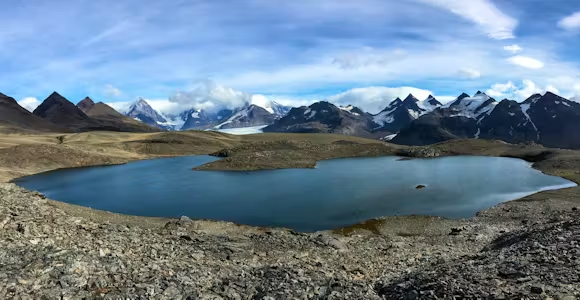
Fortuna Bay
Fortuna Bay is home to one of South Georgia's most charming king penguin colonies, and offers the chance to recreate the historic Shackleton Walk to Stromness.
Discover MorePrice Match Promise-We’ll match any price you find elsewhere for the same trip
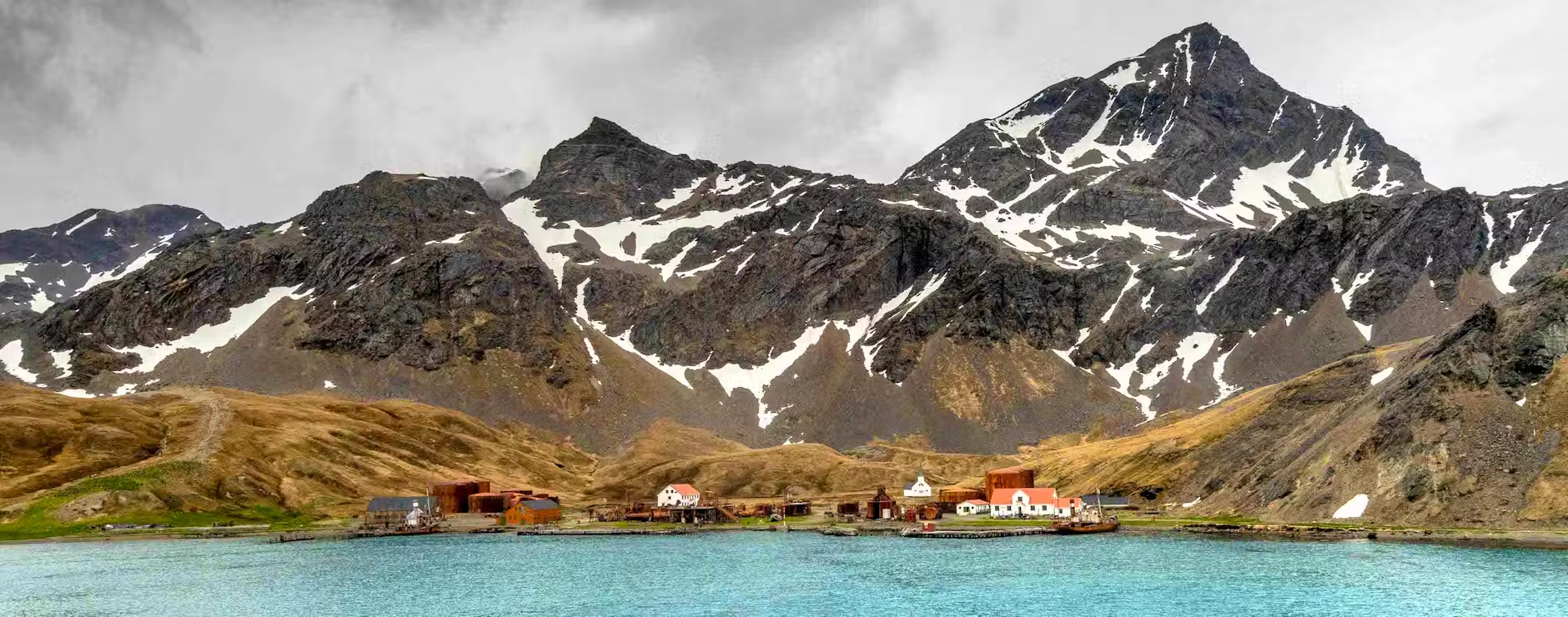
The old whaling station of Grytviken is the historic heart of South Georgia. Visitors here can raise a toast at the grave of the great polar explorer Sir Ernest Shackleton, send a postcard from one of the most remote places on earth, or simply wander the rusting ruins of a once bloody past and see how South Georgia's wildlife is reclaiming this place for itself.
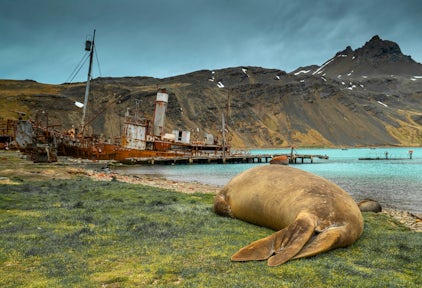
An abandoned whaling ship at Grytviken
Grytviken was home to the first permanent whaling station in South Georgia and was founded in 1904 by Carl Anton Larsen, the father of the island's whaling industry. It sits in King Edward Cove at the head of Cumberland Bay, in what the explorer Frank Wild called 'the finest natural harbour' in South Georgia. Sealers in the 19th century had long known this: the name Grytviken is Swedish for 'pot bay' referring to the old trypots for rendering blubber that found here.
In the first season of whaling at Grytviken, humpack whales were so plentiful that the whalers didn't even need to leave the bay to fulfil the season's catch. By the time that whaling ceased here in 1964 and the station abandoned, more than 54,000 whales were processed here, including a female blue whale caught in 1912 that measured 34.1m – the largest individual ever recorded.
In 1992 the South Georgia government took on full responsibility for the site. A two year project in 2005 made the site safe for visitors by removing hazardous waste and some of the ruined buildings.
King Edward Point at the northern mouth of the bay is home to a large British Antarctic Survey base. When you sail past, look for the memorial cross on Hope Point, erected in Sir Ernest Shackleton's honour after his death here in 1922.
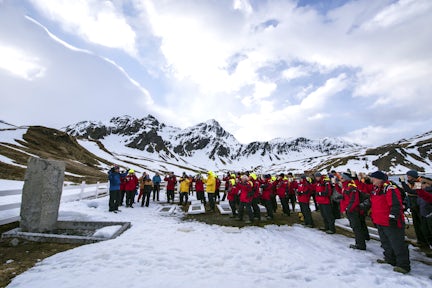
Toasting 'the Boss' at Shackleton's grave in Grytviken
Sir Ernest Shackleton died of a heart attack on board his ship Quest moored in Grytviken harbour on 5 January 1922. At his widow's request, he was buried here in the whaler's cemetery. It's a central part of any landing to pay your respects at his grave: expedition guides lead the group in a toast to 'the Boss'. His grave is alone in the cemetery for pointing south – to Antarctica. After toasting the great man, be sure to view the reverse of his gravestone to read a verse by Robert Browning, his favourite poet. The ashes of Shackleton's right-hand man Frank Wild were interred next to him in 2011.
It's a tradition to pour a little of your drink on his grave, but note that work had to be done to stabilise the grave in time for the centenary of his death in 2022, in part due to it over-saturation by whiskey. The oldest grave dates from 1838. The simple white cross near the gate is of Felix Artuso, an Argentinian submariner who died during the 1982 occupation of the island.
The cemetery is enclosed by a fence to prevent the gravestones being damaged by seals.
At last after 16 days of turmoil and anxiety on a peaceful sunshining day we came to anchor in Grytviken... It is a strange and curious place. A wonderful evening. In the darkening twilight I saw a lone star hover gem-like above the bay.
Sir Ernest Shackleton final diary entry, 4 January 1922

The Norwegian Church amid the ruins of Grytviken whaling station
Many of the whaling station buildings have been removed for safety reasons, exposing a mass of rusting machinery to tell the story of Grytviken's days as a charnel house. Action centred on the flensing plan, where carcasses were winched ashore; to either side are the remains of the meat plant and blubber cookery.
In February 2023, the Main Store building was reopened for visitors after a long restoration. Built around 1920, it contains harpoon grenades, blubber hooks, flensing knives and other paraphernalia of the whaling industry – a haunting time capsule from Grytviken's darkest days.
On the jetty facing the Main Store is the beached whalecatcher ship Petrel, its harpoon gun still in situ. Two further ships, Dias and Albatros are run ashore facing the museum.
The open area behind the station works was once home to the workers' living quarters: barracks, bathhouses and even a cinema.
The whitewashed Norwegian Church, sent prefabricated to Grytviken in 1913, sits on the edge of the whaling station beyond the rusting oil tanks. The whalers themselves were famously ungodly, but regular services are still sometimes held for both residents and visiting cruise ship passengers. Weddings are even held here from time to time. Shackleton's body lay in state here in 1922, and the church walls are lined with fascinating memorials.
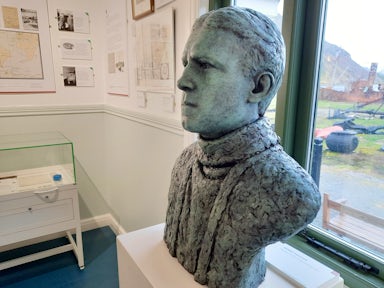
Shackleton's bust in the South Georgia Museum
The South Georgia Museum opened in 1992 and is housed in the old manager's villa of the whaling station. Shackleton and his officers were frequent visitors here in 1914 at the start of the Endurance expedition.
The museum has some excellent exhibits covering all aspects of South Georgia's history and wildlife. Many people love to take their photo next to the taxidermied wandering albatross – it's a rare opportunity to see how massive they really are. A side building houses a replica of the James Caird, while outside on the museum's 'lawn' there are various outsized items of whaling paraphernalia, including the terrifying blade of a steam-driven bone saw.
There is a small post office next to the museum, offering a chance to send a postcard from one of the most far-flung places on earth. Both the museum and post office have small shops with great souvenirs, and open their doors whenever there's a ship in the harbour.
What's it like to be the curator of the southernmost museum in the world?
Swoop Antarctica Expert Paul
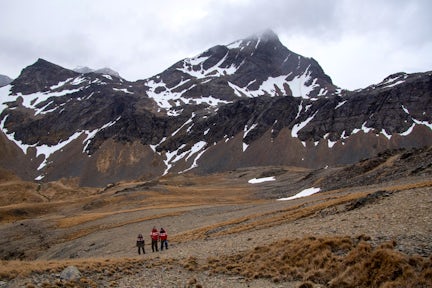
Hiking near Mt Duse above Grytviken
A popular short guided walk in Grytviken is to follow the rough track in the shadow of Mount Duse past the Norwegian Church to a scenic viewpoint overlooking King Edward Cove. The views are superb, looking down over the whaling station and your cruise ship looking like a tiny bath toy in the bay. Behind the cemetery you can see Gull Lake – a small dam here generates hydroelectricity for the settlement.
Depending on the schedule and the weather, it's not unknown for some ships to land their passengers by zodiac in neighbouring Maiviken bay to take an extended three mile walk (around 2–3 hours) over the hills to the Norwegian Church. It's a great way to approach Grytviken, with the added bonus of seeing the small gentoo penguin colony resident at Maiviken.
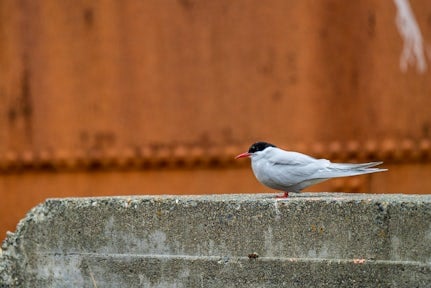
Antarctic tern in Grytviken
Wildlife is far from the main draw at Grytviken but the most charismatic species seen elsewhere are all represented here: fur seals, elephant seals and the occasional group of king penguins.
The attraction here is seeing them against the incongruous setting of the abandoned whaling station: seals sleeping among the rusting machinery, penguins coming ashore next to the abandoned catcher ships and Antarctic terns nesting in knots of chains once used to haul whale carcasses ashore.
Everywhere you look, nature is reclaiming this site of bloody exploitation. Grytviken may not be the most dramatic wildlife viewing place in South Georgia, but this fact alone surely makes it one of the most hopeful.
Price Match Promise - We’ll match any price you find elsewhere for the same trip
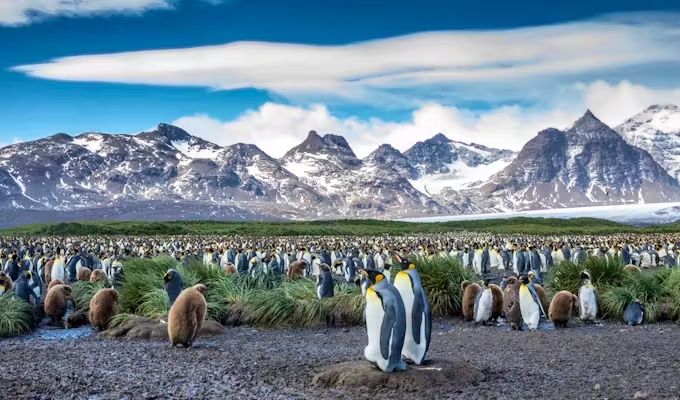
4.9 out of 5
Voyage south in Shackleton’s footsteps, exploring the Southern Ocean's highlights as part of this expansive 20-day adventure. A well-balanced itinerary gives plenty of time in each jaw-dropping location. Explore from the comfort of your sleek purpose-built expedition ship, accompanied by…
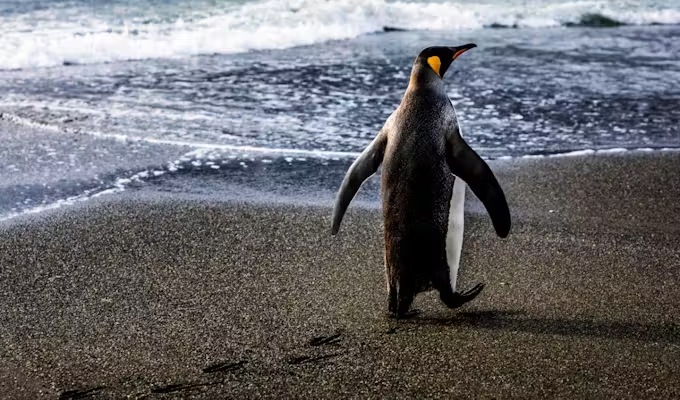
4.6 out of 5
This comprehensive voyage takes in the jaw-dropping wildlife of South Georgia and the Falklands, as well as the dramatic landscapes of the iceberg-strewn Antarctic Peninsula. You’ll travel on board a purpose-built expedition ship with spacious cabins, state-of-the-art technology and a…
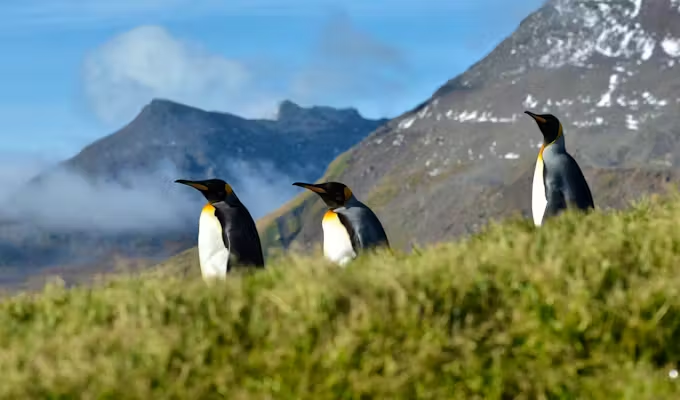
4.6 out of 5
This unique express trip saves time by flying back from Antarctica, cutting out 2 sailing days and skipping the Falklands. Maximising your time amid the spectacular wildlife and scenery of the White Continent and South Georgia is the focus of…
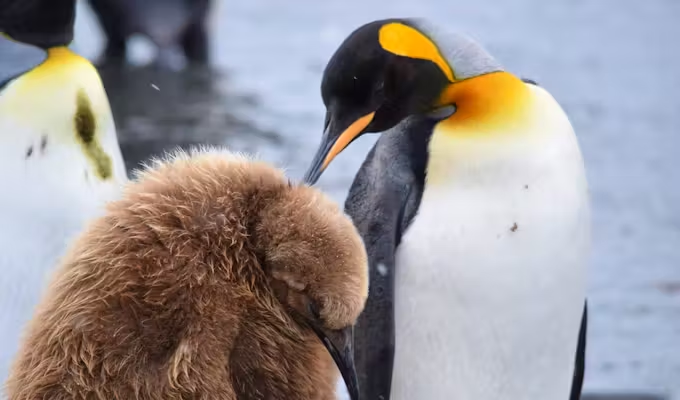
An epic 23-day voyage which packs in an astonishing 7 days in Antarctica, 4 days in wildlife-rich South Georgia and the Antarctic Circle at 66 degrees south. It's very rare to find a trip combining all three places. Limited departure…
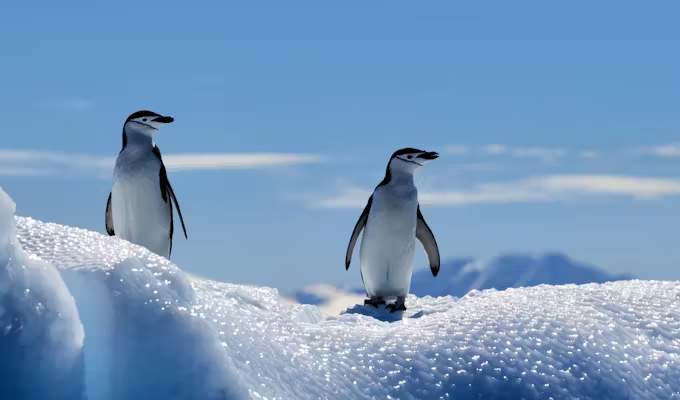
4.6 out of 5
With a good choice of departure dates through the season across three medium-sized ships, this 19-22 day trip stands out for its value for money and the broad range of cabin categories available, including Quads, which are…
10/10 - We were highly focused on getting to South Georgia Island because of our longstanding admiration and respect for Shackleton and his accomplishments. We were thrilled to pay our respects at the grave. We were not aware of how amazing the wildlife on South Georgia would be - the king penguins were thrilling. If we had only gone to the Peninsula it would have been great but not nearly as impressive and mind blowing. Read the full review
Travelled: January 2025
Alisa Schreier - USA
I was particularly pleased to have had the opportunity to see Shackleton expedition sites: falls near Stromness, Grytviken & especially the rare access to Point Wild on Elephant Island. Read the full review
Travelled: January 2025
Lars Smith - UK
Both South Georgia and Antarctica are maybe one of the last untouched areas on Earth. Although it is clear everywhere humans pop up in earlier days, we came to ruin; looking at seal and whaling stations on South Georgia. Read the full review
Travelled: December 2024
Walter Blom - Netherlands
10/10 - Aside from the truly breathtaking scenery and nature, there was so much diversity on this trip - landscape and wildlife, obviously, but also history (Grytviken whaling station, following Shackleton's amazing journey) and culture (Stanley on the Falklands was a surprise hit - what a fantastic community!). Read the full review
Travelled: December 2024
Drew Wilson - USA
Most memorable moment? Touching spots where Ernest Shackleton walked over 100 years ago. Visiting his grave was a real ‘bucket list’ check in the box. Read the full review
Travelled: December 2024
Mark Downing - United States Minor Outlying Islands
The terrain in Antarctica is hard to describe and the wildlife in South Georgia was almost beyond belief. We had an awesome snowshoe at Fort Point and the hike and pilgrimage to Shackleton's grave was remarkable. We had wonderful meals with expedition staff and fellow travelers. Read the full review
Travelled: November 2024
Leslie Ritter - USA
Take the expedition journey that includes the Falklands, South Georgia and the Antarctic Peninsula as you will see a lot of wildlife on South Georgia which you would otherwise miss. At South Georgia make sure you go to Shackleton’s grave and raise a toast to him – visit the museum at Grytviken South Georgia and see the James Caird III replica. Read the full review
Travelled: October 2024
Adrienne Steele - New Zealand
Most memorable moment? I enjoyed watching all the young fur seals around the old whaling stations of Grytviken and Leith Harbor. Read the full review
Travelled: January 2024
Carole Gates - USA
Most memorable moment? Visiting Shackleton’s grave, hiking the last 3/12 miles into Stromness , seeing whales close up and many more! Read the full review
Travelled: December 2023
Pete Honzik - USA
Most memorable moment? Evening zodiac tour in Antarctica was truly special, as was visiting Grytviken and Shackleton's grave. Read the full review
Travelled: December 2023
Suzanne Finney - Palau
Fans of Sir Ernest Shackelton would also experience many moving moments as they see and experience the very area where this explorer traveled and was buried. Read the full review
Travelled: February 2023
Donna Potaczek - USA
Review:
Grytviken is the only location in South Georgia that visitors are guaranteed to call at, as all ships call here to undergo mandatory immigration and biosecurity checks.
All visits to Grytviken must be made in accordance with the site visitor management plan produced by the Government of South Georgia & the South Sandwich Islands.
Visitors may enter the church, post office, museum and main store – all other buildings are out of bounds. Climbing on any of the old whaling station structures or the beached whaling ships is forbidden. An invitation is required to visit King Edward Point, where the government buildings and British Antarctic Survey research base are housed.
Biosecurity checks are particularly stringent in Grytviken.Thanks to its long human history the site is home to many invasive plant species, making extra checks essential on depature to prevent the spread of non-native species. Do not sit or place bags on the ground at Grytviken, and avoid any areas marked with orange posts: invasive bittercress and procumbent pearlwort may be found here, although efforts are being made to control it.

Fortuna Bay is home to one of South Georgia's most charming king penguin colonies, and offers the chance to recreate the historic Shackleton Walk to Stromness.
Discover More
King Haakon Bay was the terminus for Shackleton's epic boat journey from Elephant Island to South Georgia – a visit here is a trip highlight for many polar history enthusiasts.
Discover More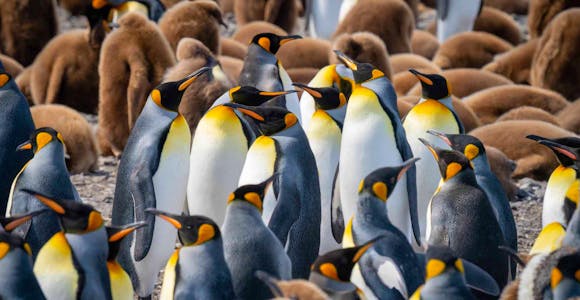
Even on an island that abounds with incredible wildlife encounters, the vast king penguin colony of St Andrews Bay is truly something special.
Discover More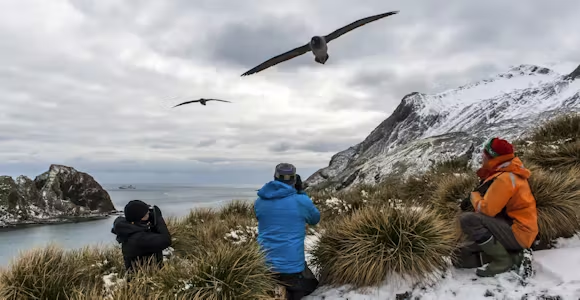
The beautiful natural harbour of Elsehul is one of the most stunning locations in South Georgia, and has some of the best bird watching on the entire island.
Discover MoreWe'll spend some time listening to your aspirations, then discuss the kind of experience that might suit you.
Next we'll discuss the options, shortlist the best trips for you and present you our impartial recommendations.
We'll place a 24 hour hold on your preferred option - without obligation - whilst we talk through the details.
With over 100 years of South Georgia experience between us, we can help you to exactly the right trip for you.
1 888 970 4570This website uses cookies to ensure you get the best experience on our website. Privacy policy
We don’t charge a commission and there are no hidden fees. Just impartial, expert advice from the leading Polar cruise agent. Schedule a call with our Antarctic Experts today.